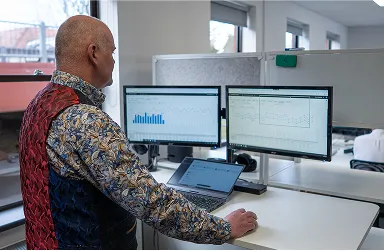IBM Planning Analytics Software licences
We don’t mind if you have your licences with us or with someone else, but when you keep it all together, it just makes it all a bit easier to deal with. We will take care of your renewals, if you need more licences, as well as consultancy and support if you need it. There’s no need to go shopping around, we will always get the best quote for you.
Licence Fee Calculator
Shoot us over some info & get a quote within 24 hours. You know, your classic who, who, what, what, how.
Features of the software
The system can be exceptionally diverse and can do a lot of things that you might not expect it to be able to do, but its main features are key in helping with:

Budgeting & Forecasting
When budgeting and doing forecasting models, you need to know high-level results and low-level detail relating to your data. The system offers:
-
Real time updates, meaning any changes you make to financial models are immediately shown
-
Multi-dimensional modelling, meaning you can get detail analysis for any part of the business
-
Top-down and bottom-up capabilities, so you can create budgets and forecasts the way you want.
-
Predictions powered by AI for data-driven forecasts and trend analysis.

What-If & Scenario Planning
Taking a look at all of the possibilities that can happen in financial modelling is a key part of working with financial data. Luckily, IBM Planning Analytics can:
-
Let you test a tonne of different assumptions, like revenue growth, cost changes, investment scenarios, etc.
-
Instant, real-time calculations that provide instant comparison between scenarios.
-
Models outcomes for mergers, acquisitions & cost-cutting measures.

Financial Reporting
We know that finance teams rely on Planning Analytics to create dashboards for internal and external reporting. In order to be helpful with that, it has:
-
Dashboards that you can personalise with your key points, like, revenue, expenses, cash flow, etc.
-
Capabilities that let you drill down into the underlying data so you can get the insights you actually need
-
Automation so that you don’t have to do as many manual tasks and your reports are error-free
What the cost will depend on
There are a few different types of software licences you can get that will determine the overall end cost.
On-premises
This basically just means it’s on site and you host it on the server and have total control.
Cloud
IBM hosts the system on their server and you access it via the cloud, like OneDrive or Google Drive.
Hybrid
A combo of the two so you can keep sensitive data on premises while getting the benefits of cloud.
What you need to think about
In order to determine what level of software licence you’ll need, there are few things to take into consideration:
Size of the business
Whether you’re a multinational corporation or an SMB, you can use IBM Planning Analytics. People often think that you have to be a giant corporation to benefit from the features of the system. But that’s certainly not the case, if you need as little as 5 users, it can do that.
However, the size of the business will impact the cost and how you use the system. If you’re a larger corporation, you’ll often have a complex financial model, larger data sets, and need more from the system overall. With more memory, processing power, and additional users, it’ll impact the amount it will cost.
Number of users
Planning Analytics operates their licences on a per-user basis and depending on the role of the user, it will cost a different amount. Depending on if you’re looking to build and manage financial models, a contributor adding in data and interacting with models, or if you’re just someone who is viewing dashboards and reports, it will all cost something different.
The more users you have, the more expensive it will be, but if you assign the users the relevant role, be it modeller, contributor or viewer, it can help optimise costs. By incorporating the role based aspect, you can scale your user access without paying more than you have to.
Level of memory you need
Depending on what work you’re going to be doing on the system, it will impact the level of memory you need. IBM Planning Analytics runs on a MOLAP database, which means it can process the calculations and models in real time, but it also means that if you have a large data set, it will require more memory.
If you have a large data set and a complex model, it will require more memory to be able to process the requests. Plus, you’ll also want to consider scalability, if your company is growing and you anticipate data volumes and complexity of your models to increase, then you’ll want to have that in mind as it will impact your costs.
Tell us how we can help
Book in a chat with our team

Articles
Words about IBM TM1 we’ve written to try to help you out with your planning analytics system. From new challenges, updates, the basics, etc, get an idea of how to optimise your financial data, reports, and more so that you can seem smarter than all the other financial analysts out there.
